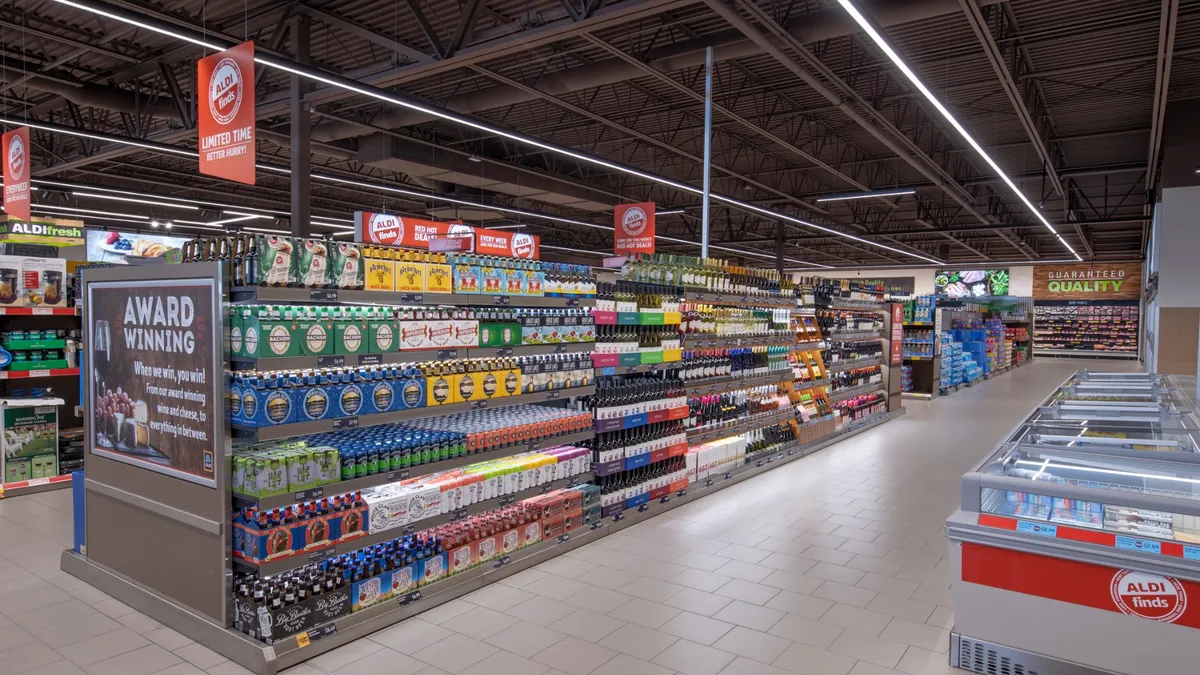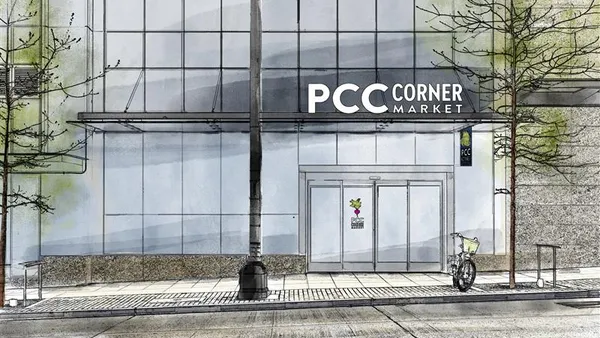Dive Brief:
- Online alcohol sales from grocery stores grew from $87 million in 2017 to $295 million in 2019, according to a report by Rabobank. Last year, online beer sales in the channel grew 120%, while wine grew just under 100% and spirits grew by nearly 150%.
- However, the financial firm estimates grocers could have sold as much as $1.8 billion in online wine, beer and spirits if sales share in the channel matched that of in-store. According to Rabobank, alcohol accounts for less than 1% of online sales versus between 5% and 6% of store sales.
- Rabobank forecasts grocers could lose up to $3.7 billion in online alcohol sales over the next three years if they don’t improve merchandising and availability.
Dive Insight:
Alcohol’s online sales share shouldn’t be so low, Bourcard Nesin, beverage analyst with Rabobank and author of the firm's report told Grocery Dive in an interview. Online consumers are more affluent, more educated and typically live in urban areas — all factors that correlate with higher alcohol consumption.
The problem, he said, boils down to insufficient merchandising and retailer reluctance to tackle thorny state regulations.
Alcohol laws vary by state, and they can be difficult to navigate as retailers consider adding online sales. Nesin said certain states require food purchases with online alcohol sales while others don’t. Some also say that only the employee of a store can make deliveries, complicating efforts to link up with delivery companies and other service providers.
Trade groups, suppliers and retailers are pushing legislators to relax alcohol regulations and make way for online sales, and Nesin said companies should make sure they understand local laws and then push for commonsense changes.
But according to Rabobank’s research, 39 states allow store pickup of alcohol while 30 allow same-day delivery, meaning there’s plenty of room for retailers to enter the market in some form.
Retailers seem to be realizing alcohol’s online sales potential and concluding it’s worth the fight. Last fall, Walmart made alcohol available for pickup at 2,000 stores across 29 states. Other retailers like Schnucks have launched alcohol delivery through companies like Instacart, while H-E-B delivers throughout Texas via its on-demand service, Favor. This week, Instacart announced it will offer alcohol pickup from more than a dozen retailers, including Aldi, Publix, Wegmans and Sprouts Farmers Market.
Still, limitations persist. According to Rabobank’s research, Walmart only offers alcohol delivery from roughly 200 locations, or just 18% of its total stores that offer grocery delivery.
And even when retailers do offer alcohol online, they may not be doing enough to let shoppers know. According to 2018 research by Constellation Brands cited by Rabobank, 65% of grocery shoppers in markets with online alcohol sales didn’t know the service was available.
Retailers are barred by law from accepting trade dollars from alcohol suppliers, so many grocers have opted to feature banner ads and other online promotions from manufacturers that can pay, Nesin said.
Retailers are also simply not doing a very good job selling alcohol online, he said. They tend to use the same product page templates for wine, beer and spirits that they use for milk, bread and boxes of cereal. A few product attributes are listed along with the price.
But consumers like to explore different wine and beer varietals and want to learn about the production process behind a bottle of Kentucky bourbon or a smoky tequila. Merchandising attributes like country of origin, tasting notes and ratings that are often displayed in stores go missing online, Nesin said. And information that often is available is incomplete. He said he visited a product page for a private label white wine from a major retailer and saw only the word “melon” listed under the description.
“I couldn’t tell if that was a melon-flavored wine or if that was just a tasting note,” Nesin said.
To improve online sales, Nesin said grocers need to first take the opportunity seriously. Retailers have increased their store assortments of wine, beer and spirits recently, added new merchandising and services like growler pours and wine guides. They need to consider the unique needs and opportunities that come with online sales.
“The wine buying or the spirits buying experience is very different from buying cheese,” Nesin said.
They also need to keep the lines of communication open between themselves and supplier partners. Retailers need to make sure they’re getting detailed product information from beer, wine and spirits companies. They should also send customer data back to these suppliers and work together on crafting promotions. Nesin said retailers should also rely on manufacturers to better understand local laws and to work together pushing for reforms.
Across all channels, online alcohol sales totaled $2.6 billion last year. Direct-to-consumer sales from suppliers are growing along with marketplaces like Drizly. But shoppers still do most of their wine, beer and spirits buying from grocery stores, and Nesin believes that the channel’s share of sales could be significant if retailers and suppliers can make the right adjustments.
"Alcohol is a major trip driver and promotes bigger baskets in-store, and that can be true for online as well," he said.













